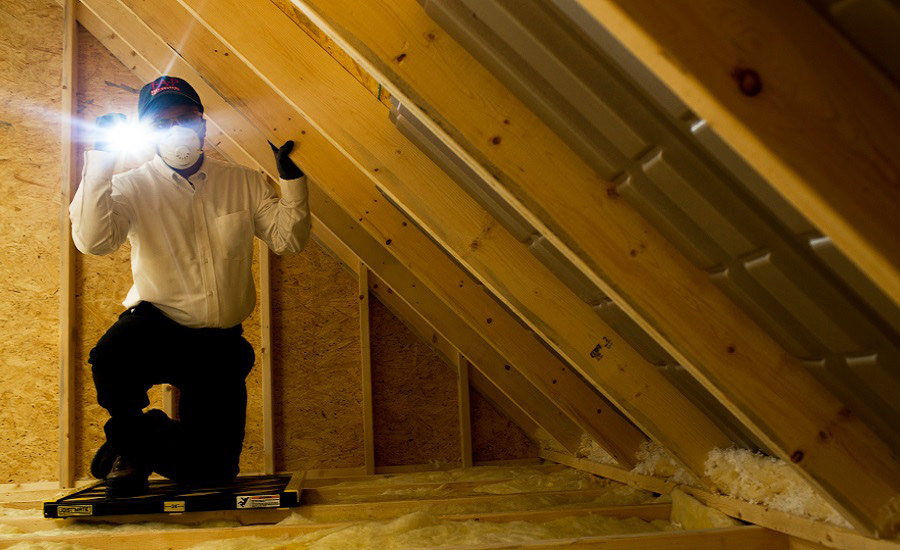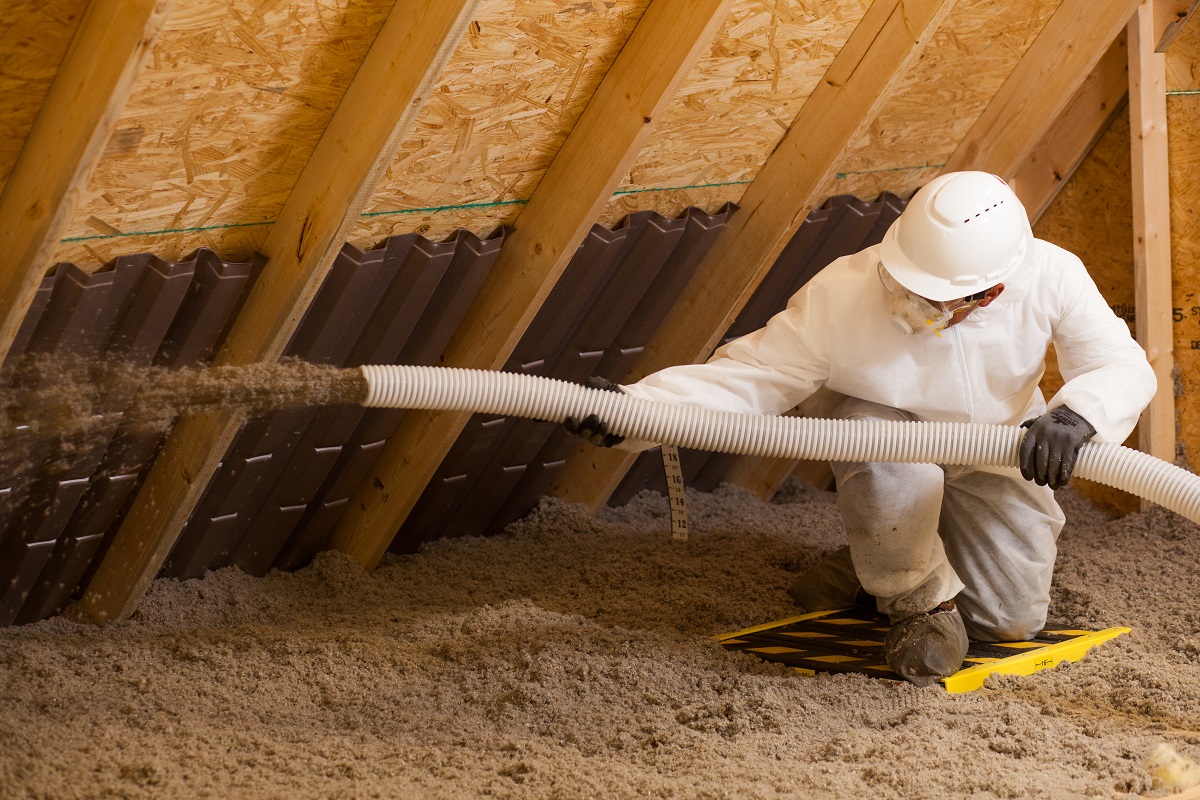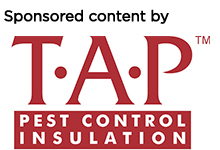
Attics are a frequent entry and harborage point for an array of pests, including termites, cockroaches, ants and rodents, and wildlife, including squirrels and raccoons. The attic is also one of the most infrequently visited locations in a home, which fits nicely into a pest’s behavior pattern. Being an expert set of eyes in a place most homeowners want very little part of adds value to pest management professionals (PMPs) service offerings and builds a tighter connection with the homeowner.
Today’s PMPs are looking to offer whole home service solutions to consumers. One possible service fits nicely in a home’s attic: attic restoration.
Attic restoration (noun)
The process of removing damaged and/or soiled insulation from a customer’s attic and replacing it with a fresh layer of insulation to create a healthier, more energy-efficient home.
Attic restorations give PMPs a prime opportunity to increase the comfort of their customers, as certain insulation products not only reduce household energy and utility usage, but also deliver protection against pests.
This article will provide PMPs considering integrating attic restoration into their services everything they need to know, including:
- Why and how to sell the service
- How to conduct a restoration
- How to determine the amount of insulation to use
- Safety concerns to consider
- The right insulation for the job
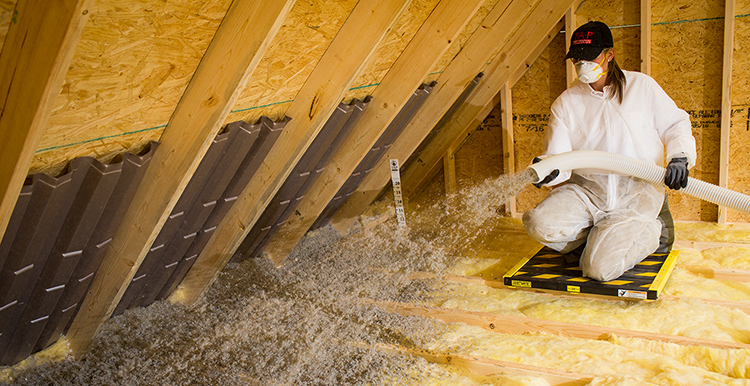
Selling an attic restoration
The best part about adding an insulation service add-on is that you won’t need to spend a lot of your marketing budget to garner interest from your customers. Simply offer a complimentary attic inspection each time you visit the home. This gives your team the opportunity to:
 Determine the type of insulation currently in place
Determine the type of insulation currently in place- Examine the condition of the insulation
- Investigate any pest-related issues that may be transpiring in the attic
Following the attic inspection is typically when you present the new attic restoration service offering. Remember, most homeowners do not step foot in their attic while others only visit the attic annually. It is recommended to have your smartphone or tablet handy to take photos or video of the attic space and condition to share with the homeowner.
The attic restoration process
Restoring an attic can be a straightforward job, if you know how to do it the right way. Here are five steps to conduct a partial or complete attic restoration.
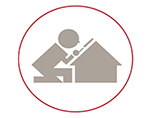 Conduct an inspection of the customer’s attic to determine the type, amount and condition of the insulation.
Conduct an inspection of the customer’s attic to determine the type, amount and condition of the insulation.
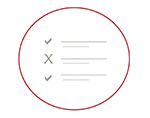 Propose a partial or complete attic restoration to your client.
Propose a partial or complete attic restoration to your client.
- Vacuum out the existing insulation and debris to remove all pest presence and damaged insulation.
- Disinfect the attic space to prevent the spread of bacteria and harmful allergens.
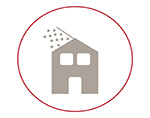 Install a fresh layer of insulation that meets the recommended Resistance to Heat Value (R-Value) requirements by the U.S. Department of Energy, as well as a permanent layer of pest protection.
Install a fresh layer of insulation that meets the recommended Resistance to Heat Value (R-Value) requirements by the U.S. Department of Energy, as well as a permanent layer of pest protection.
A typical attic restoration service — including the removal of insulation, sanitation, space prep and installation of new insulation — will take two technicians approximately six hours to complete.
How much insulation is needed?
While conducting an attic restoration, a certain amount of insulation must be used to bring the home’s thermal envelope — the “shield” that guards a living space from outdoor conditions — up to federal standards. To understand how much insulation is required, one must first understand R-Value or the measure of heat transfer through insulation.
Depending on the area of the country in which you serve, the U.S. Department of Energy has very clear guidelines on providing greater energy efficiency for your customers’ homes. Keep in mind that insulations with a higher R-Value require less insulation to be installed, which saves your customer money. Choose your insulation wisely, and be rewarded with referrals and customer loyalty.
Learn more about determining the amount of insulation you should use.
Concerning safety
When working in the attic, you and your colleagues will be working in a confined space. Confined spaces are potentially dangerous and employers must evaluate all confined spaces, such as an attic in which their employees work, to determine whether hazards exist or whether the work to be done in the space has the potential to create hazards.
A confined space is one which is large enough and so configured that an employee can enter and perform assigned work; has limited or restricted means for entry or exit; and is not designed for continuous employee occupancy.
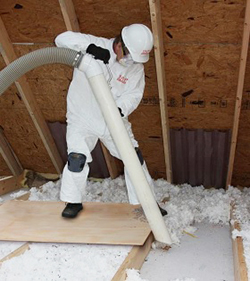 While working in a confined space, PMPs are advised to wear the following personal protective equipment, in compliance with the U.S. Occupational Safety & Health Administration.
While working in a confined space, PMPs are advised to wear the following personal protective equipment, in compliance with the U.S. Occupational Safety & Health Administration.
- Coveralls
- Helmet, hard hat or bump hat
- Safety goggles
- Gloves
- Knee pads
- Dust mask with aspirator
- Long sleeves, long pants
- Shoes and socks
- Shoe/boot covers
A thorough inspection of the attic is recommended prior to entering any agreement with a homeowner to ensure the safety of your employees and the protection of the homeowner’s property. Most home attics and crawl spaces do not require a permit for the installation of insulation; however, one might be required if certain hazards are present.
Learn more about working in confined spaces.
Choosing the right insulation
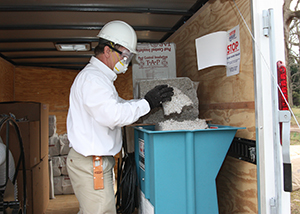 PMPs will need to determine the type of insulation they will use for attic restorations.
PMPs will need to determine the type of insulation they will use for attic restorations.
There is only one insulation product registered with the U.S. Environmental Protection Agency in all 50 states to control insects and protect the house that also includes an ENERGY STAR® label and UL Classification: TAP Pest Control Insulation. TAP Pest Control Insulation, which is designed for the pest and wildlife management, delivers an effective protective barrier against pests, as well as greater energy efficiencies and lower utility bills.
“We see insulation services as part of the whole house protection approach many pest management professionals are embracing,” says TAP Insulation President Bill Turk. “It fits nicely into a PMP’s service offerings and can provide good margin revenue.”
Why TAP Insulation?
The product’s active ingredient — orthoboric acid — leaves a smaller environmental footprint than traditional pesticides but is a proven solution to eliminating pests with a mechanical kill, including cockroaches, ants, silverfish and termites.
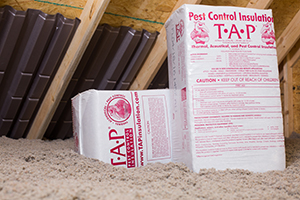 The orthoboric acid is impregnated into fibers of the insulation in a unique process — not just applied to the surface as in traditional insulation where it can fall off or be subject to the sometimes harsh environmental conditions of an attic that could reduce its effectiveness over time.
The orthoboric acid is impregnated into fibers of the insulation in a unique process — not just applied to the surface as in traditional insulation where it can fall off or be subject to the sometimes harsh environmental conditions of an attic that could reduce its effectiveness over time.
Isn’t boron in other insulations?
The answer is yes. All cellulose insulation products have some form of boric acid in them to pass ASTM fungal testing. However, depending on what other additives are included, additional home health issues can arise such as off-gassing and creating unnecessary dust particles that have the potential to permeate the living space of the home.
About Pest Control Insulation
Since 2001, Pest Control Insulation LLC has provided turnkey equipment packages for pest management and wildlife professionals alike, as well as world-class training and support. Dedicated to providing new revenue opportunities through innovative, environmentally responsible and highly valued pest management systems, Pest Control Insulation LLC supports companies nationwide.
To learn more about Pest Control Insulation Products and Program, visit www.TAPinsulation.com or watch the Opportunity Video below.
How much do you know about attic restorations?
The well-rounded pest management professional focuses not only on the elimination of pests from their clients’ properties, but also the prevention of pest invasions. Attic restoration is the perfect add-on service to protect your clients’ homes against pests and other external elements.
Test your knowledge to see if you’re ready to invade the attic.
TAP® Pest Control Insulation is a registered trademark of Pest Control Insulation. ENERGY STAR® is a registered trademark of the Environmental Protection Agency.
Article content was contributed by Jeff Fenner, B-Communications and Pest Control Insulation. This page was produced by North Coast Media’s content marketing staff in collaboration with Pest Control Insulation LLC. NCM Content Marketing connects marketers to audiences and delivers industry trends, business tips and product information. The Pest Management Professional editorial staff did not create this content.
